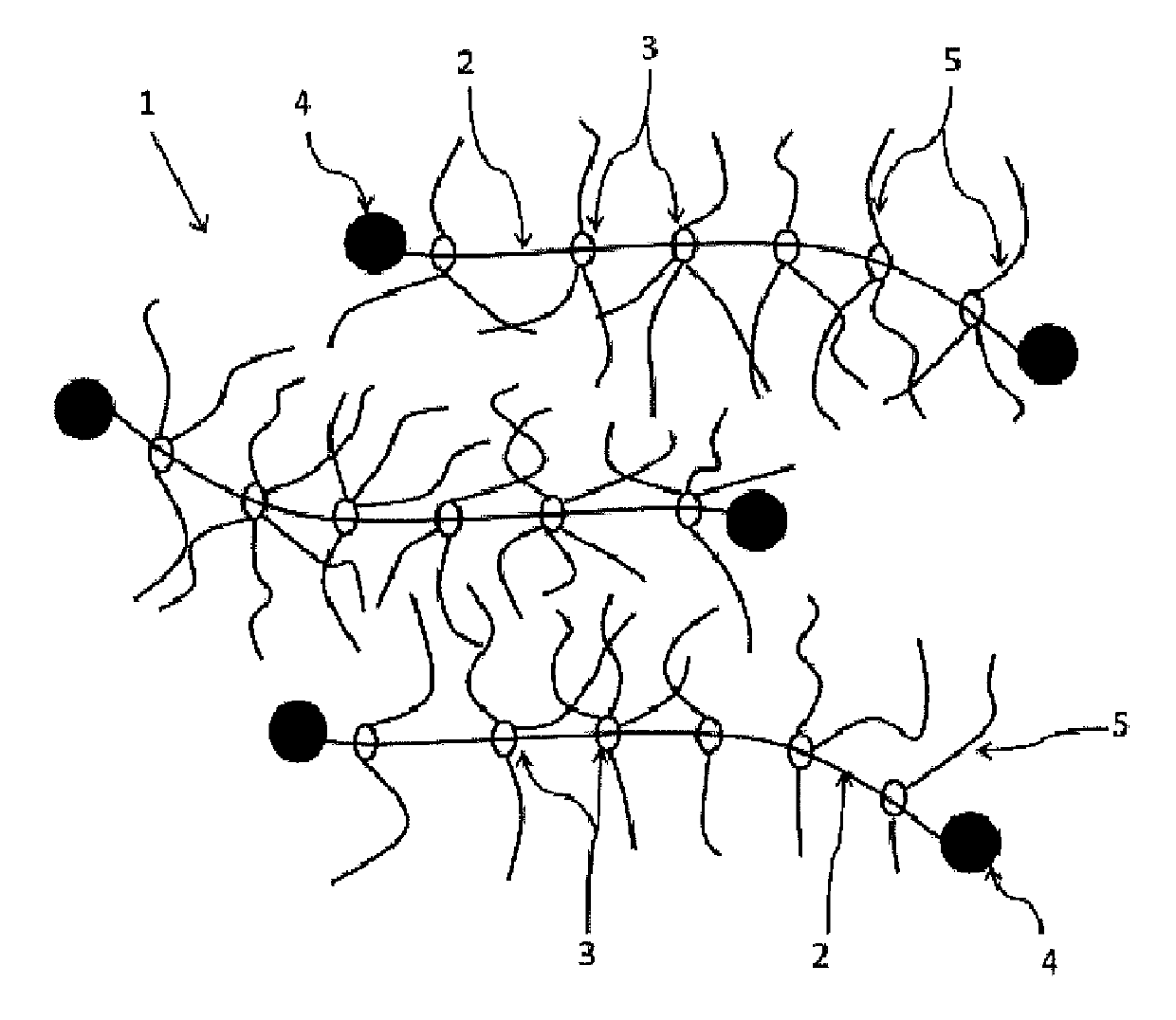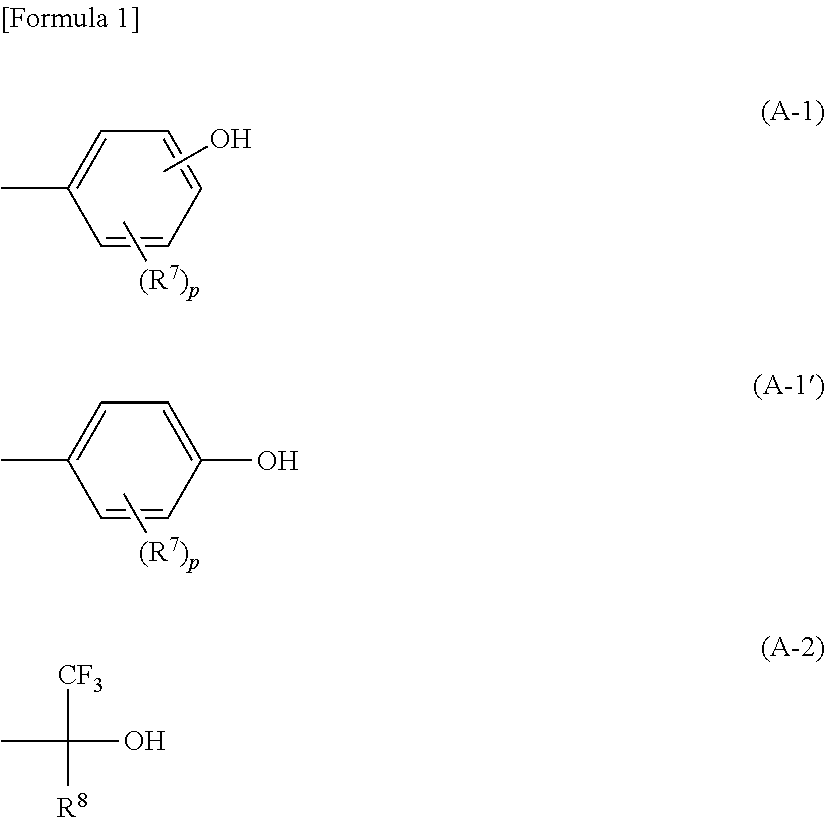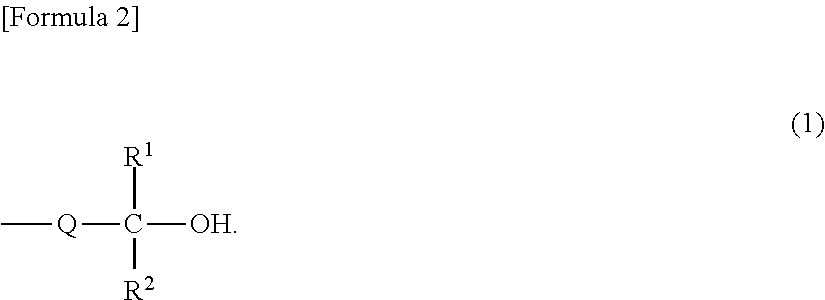Polyrotaxane, production method therefor, and optical composition containing said polyrotaxane
a technology of polyrotaxane and production method, which is applied in the direction of optical elements, instruments, chemistry apparatus and processes, etc., can solve the problems of excessive reactivity of iso(thio)cyanate group, poor performance, easy to cause, etc., and achieve good moldability, high mechanical strength, and suppress moldability and cloudiness
- Summary
- Abstract
- Description
- Claims
- Application Information
AI Technical Summary
Benefits of technology
Problems solved by technology
Method used
Image
Examples
examples
[0345]Next, the present invention will be described in detail using Examples and Comparative Examples, but the present invention is not limited to the present Examples. In the Examples and Comparative Examples described below, evaluation methods for each component and photochromic characteristics above are as described below.
[0346](A) Preparation of a Polyrotaxane being Characterized in that a Side Chain Having a Secondary or Tertiary Hydroxyl Group is Introduced into at Least Part of a Cyclic Molecule (Polyrotaxane According to Aspect I)
[0347]AI-1: Polyrotaxane Having a Tertiary Hydroxyl Group in a Side Chain
[0348]Hereinafter, a preparation method for a polyrotaxane (AI-1) will be described below.
[0349](1-1) Preparation of PEG-COOH:
[0350]As a polymer for forming an axle molecule, straight-chain polyethylene glycol (PEG) having a weight average molecular weight of 20,000 was arranged.
[0351]Each component was dissolved into 100 mL of water according to the formulation described below...
example i-1
[0560]A homogeneous liquid (optical composition) was prepared by mixing each component according to the following formulation. Each blending amount is shown in Table 3.
Formulation:
[0561](A) Polyrotaxane: 8 parts by mass of AI-1
[0562](B) Polyisocyanate compound: 47 parts by mass of NBDI
[0563](C) Poly(thi)ol compound: 20 parts by mass of PL1, 16 parts by mass of TMP,[0564]Mono(thi)ol compound: 9 parts by mass of PGME10
[0565](D) Photochromic compound: 0.04 part by mass of PC1
[0566](H) Internal mold release agent: 0.3 part by mass of PA2EE (based on a total amount of the mixture)
[0567](Other blends): 0.1 part by mass of HALS
[0568]A photochromic cured body was obtained according to a kneading method by using the optical composition. A polymerization method is described below.
[0569]More specifically, the homogeneous liquid was sufficiently defoamed, and then cast into two kinds of mold forms, including a glass mold designed to be 2 mm and 10 mm in a thickness of a cured body obtained, and...
example i-2 to i-11
, Comparative Examples I-1 to I-3
[0597]A photochromic cured body was prepared in the same manner as in Example I-1 except that a photochromic optical composition having a formulation shown in Table 3 was used, and the resulting material was evaluated. The results were shown in Table 4. Moreover, the photochromic compound (D) component was not added thereto in Example I-11 and Comparative Example I-3, and therefore the photochromic characteristics were not measured. Moreover, moldability-1 and cloudiness-1 were evaluated with reference to Patent literature 8.
[0598]
TABLE 3(A)Component(B) Component(parts by(parts by(C) Component(D)(F)(G)OtherNo.mass)mass)(parts by mass)ComponentComponentComponentblendsExample I-1AI-1 (8)NBDI (47)PL1 (20) / TMP (16) / PGME10PC1 (0.04)—PA2EE (0.3)HALS(9)(0.1)Example I-2AI-2 (10)NBDI (36)PNT-40 (19) / PL1 (24) / PC1 (0.04)—PA2EE (0.3)—PGME10 (11)Example I-3AI-5 (12)NBDI (52)PL1 (16) / TMP (20)PC1 (0.04)—PA2EE (0.3)HALS(0.1)Example I-4AI-3 (16)XDI (37)PEMP (47)PC1 (...
PUM
| Property | Measurement | Unit |
|---|---|---|
| pKa | aaaaa | aaaaa |
| pKa | aaaaa | aaaaa |
| wavelength | aaaaa | aaaaa |
Abstract
Description
Claims
Application Information
 Login to View More
Login to View More - R&D
- Intellectual Property
- Life Sciences
- Materials
- Tech Scout
- Unparalleled Data Quality
- Higher Quality Content
- 60% Fewer Hallucinations
Browse by: Latest US Patents, China's latest patents, Technical Efficacy Thesaurus, Application Domain, Technology Topic, Popular Technical Reports.
© 2025 PatSnap. All rights reserved.Legal|Privacy policy|Modern Slavery Act Transparency Statement|Sitemap|About US| Contact US: help@patsnap.com



